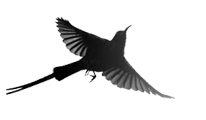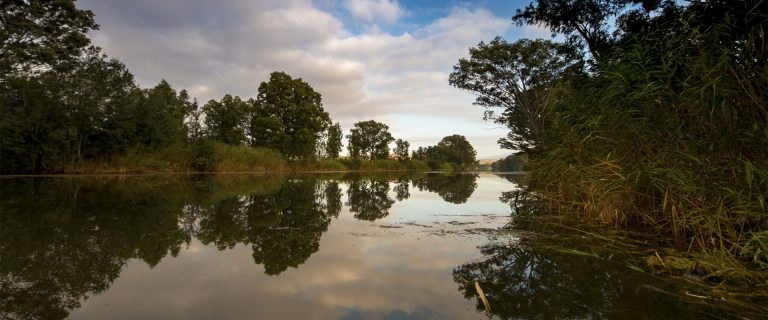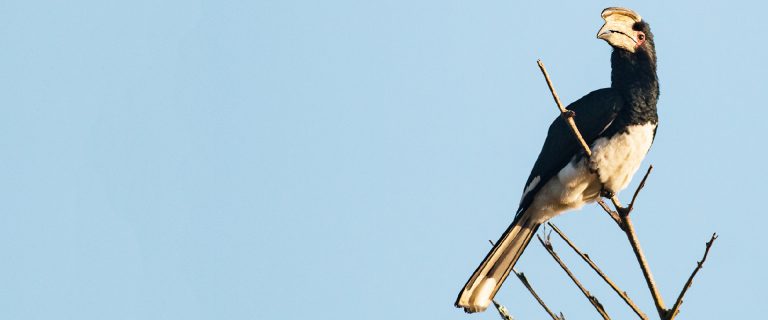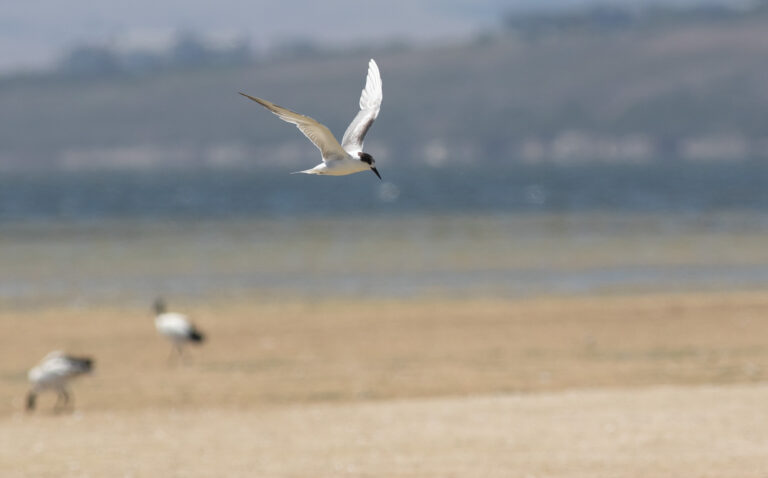A Twitch Bus Adventure – Malagasy Pond Heron (Part 1)
“Who’s on board the twitch bus?”, a query asked a few times this past week in our local whatsapp birding group. A newcomer to the group, I had assumed any mention of a twitch bus was purely in jest; there surely couldn’t be a twitch bus. That was until Garth Shaw sent me a message: “How come you haven’t signed up for the twitch bus with Michael Mason?”
It turned out the twitch bus was real after all; a VW 7 seater vehicle owned by Michael, which is used to twitch (sometimes, even across the country).
With the prospect of the twitch bus now being real, I spoke to Michael about further details. At that time we were all hoping to see the Striped Crake which had been picked up at Hluhluwe in the Zululands. It turned out that there was accommodation available for us, making the trip a real possibility for me in which would otherwise be way out of my birding budget. In a completely uncharacteristic move, I verified my spot for a 4000+ kilometer round trip to the northern parts of Kwazulu Natal with 5 other birders that I had spoken very little with. A daunting experience for a shy introvert… Though ultimately, the experience was fantastic, and I feel as though I got along better with these ‘strangers’ than people I have known for years.
Double Trouble
While the twitch was initially targeting the Striped Crake as a primary target, we soon found ourselves fixating on another extremely special find for the KZN province; a Malagasy Pond Heron. This bird is so rare for South Africa, that it was the first case of an individual being photographed in the country, just a few days earlier.
We now found ourselves in chatter on the group, deciding which target will be our primary focus. Our whatsapp group soon found itself renamed from Striped Crake Twitch to MPH Twitch. We settled on the fact that we’d be chasing the Malagasy first and then the Crake.
The day before our departure was one of painful news. Despite numerous people looking for both birds on the day, there was no sighting of either. Despite the news putting us on the back foot, we remained optimistic and pushed forward with our plans. For me, it wasn’t even a thought. I had never been to KZN before and even the most common of local birds would serve as a much appreciated lifer. The others in the car however, namely: Keir and Alouise Lynch, Dominic Rollinson and then our driving force behind the twitch, Michael Mason.

The Departure
Having taken a day of leave for the Thursday, we would depart from near Durbanville late on Wednesday afternoon. I drove through from Somerset and met Michael at his house and was introduced to Dom. They were all ready, and within minutes we were on the road. On route, we’d be picking up Keir and Alouise from Worcester.
Before long we had a near-full Caravelle load of enthusiastic birders from all walks of life, stacked up in a vehicle and ready to take on the 19 hour drive to our first location.
On route we chatted birds for hours. Discussing our own personal targets, our nemesis birds and how we’re going to find the birds that no one else had been able to for the past couple days. Despite having only really met everyone properly while on the road, it wasn’t long before I felt like I’d known them for ages. The friendliness, helpfulness and overall kind nature of those in the car set the tone for the trip. You can have a painful dip, but if it’s a dip with the right people, it’s not a complete loss.
We drove the N1, passing through the NW part of the Western Cape, an area I am eagerly wanting to work for my provincial list. There was a slight aching in my stomach knowing that dozens of new provincial birds lay wait just meters from me in the pushes of the Karoo’s veiled night sky.
A couple of stops were made along the way, a midnight snack at the Wimpy near Colesberg managed to keep us going for a bit longer, after all, we were not yet even half of the way to our destination.
I’d be lying if I said the drive was easy. Despite being a bastard and not taking the wheel (mainly out of fear and my inability to see very well at night), I found myself only getting 1.5 hours sleep on the drive through, a little less than the recommended 6 hours a day. The result was that come sunrise, my eyes seemingly had their aperture blades stuck. Once they closed — and they closed often — they would remain that way for at least 30 seconds before having to grapple with them to get them open.


Backroad Birding
Our game drive was at 14:30 and we found ourselves with some time to kill before heading towards the Heron, so Dom took us to some back roads in the Zululands, where we managed to come across an amazing ‘bird party’, where we racked up about 20 different species in a 30 minute time frame. I got my first sightings of Orange Breasted Bush-shrike, Yellow Fronted Canary, White-Crested Helmetshrike, Green Wood Hoopoe, Southern Black Flycatcher and many more. It was amazing to see so many different species all within a few meters of each other, as the chaotic chorus of these dozen-species called out from our surrounding locations. There was so much activity in fact, that I was having to pick which lifer was more important because there would be one flying past in one direction and another doing the same thing just 10 meters the other way. I ended up missing a few species that the others picked up, mainly via call only. Further down the road we encountered several Tawny Flanked Prinia, Black-Collared Barbet and a couple others.
Before too long, it was time to head through to Phinda, where we would have a few minutes of birding we could do on route from the gate to the Mziki reception area. It was here that I got my first views on the stunning Cape Glossy Starling, a bird which for most up here is seen as a “trash bird”, for me was a highlight of the trip. The radiant blue reflection of the bird is unrivaled, with the bright orange eye adding some excellent visual contrast to the colouring.
A couple of White-Backed Vultures and a single Martial Eagle also gave us sightings alongside the road.


Malagasy Pond Heron
The time had come, our 14:30 appointment was ready. A guide by the name of Brendon/Brendan – would be taking us to where the bird was seen, using an open vehicle that seats 6 visitors. At this time, the news was not good; the bird had last been seen two days prior, despite more than a dozen people managing to get access to look for the bird. Access to twitch was very limited, with only 2 drives of 6 people each day. This meant that only 12 people each day would be able to try see the bird.




We set out, reaching the damn within a couple minutes. We began scanning from up top the hill, looking down on the dam. We got some Oxpeckers on a couple mammals down below, a new bird for me. An adult Striated/Green Backed Heron also caused a bit of false excitement for some, as it stood on a small concrete jetty. I’ve seen Green Backed Heron in the Western Cape, but this was the first time I have got to see the beautiful adult plumage.
The real scanning began shortly afterwards, as we took a slow drive across the dam. A single Goliath Heron was also an enjoyable sighting which got a few camera shutters going, as it took off from the shoreline next to us.
Things suddenly then took a turn for the better…
“What’s that?”, asked Keir with audible excitement.
“Where?”, I asked.
“There, by the pole coming out the ground, to the left of it”
Unfortunately, there happened to be two poles in a short distance of each other so I remained confused for a bit. But the problem was soon resolved, and I had eyes on the bird. At this point there were already some cautiously optimistic utterings of “that’s it”. In birding, you will notice that one’s ability to describe the location will fall with how special the sighting is, I know I find myself simply saying “there” during the initial seconds of a special sighting. Whether it’s the adrenaline or the reluctance to take one’s eye off it and concentrate on the description, is a topic that may go unanswered for some time to come.
The bird soon changed positions and it was clear, we had it!
Everyone in the vehicle, from the guide to the farm manager was grinning ear to ear, with a few high fives thrown into the mix. It’s hard to explain to non-birders the sensation of picking up a bird of this magnitude and the emotions involved, especially when you’ve driven across the country for an outside chance. There’s been many occasions where it has overwhelmed me to the point of my eyes starting to water, just the raw emotion involved is amazing.




We continued to move around the road for better views of the bird, while always remaining at a distance that our driving wouldn’t frighten it off, after all, there were still many eager twitches to come give the bird a shot. We got beautiful views of the bird in flight, as it moved between the reeded water sections along the shoreline. It seemed more active than most Herons I have watched, seemingly unable to pick a spot and sit there, as though he felt spoiled for choice.
The Malagasy Pond Heron is a bit of a controversial species, in that there are some doubts regarding previous claims of sightings. When the bird is out in the open or in flight, it is easy to see what differentiates it from a Squacco, however in thick reeded beds, it is believed that some records of Malagasy may just be young Squaccos. This individual was in fact the first one to be photographed within South Africa, making it an extra special bird.
While we watched the Heron, we were also briefly distracted by a beautiful pair of Yellow-Billed Storks which came and settled on the opposing shoreline; as well as a young Martial Eagle, which was circling directly above the Malagasy, before moving on.


With our extended and good views of the bird, we were able to watch how it fed for quite a while and interestingly, there isn’t too much knowledge of this species. With an estimated global population of less than 6000 birds, the Malagasy Pond Heron is a special bird, regardless of where you see it. During our views of the feeding, we noticed that it wasn’t fishing at all, but instead it was moving between the reeds and feeding on locusts. In fact, our initial sighting was one with a locust still in the birds mouth. The bird watched the reeds intently, above its eye level, then grabbing a locust and moving on to another set of reeds.

Celebrations
Our day was concluded, as the sun drew its close, by spending a few minutes with the farm manager and the guide. We were given some drinks and snacks to close out the day at Mziki.
Upon arriving back at Dom’s parents place, where as mentioned, we would be spending the night; we were given extremely amazing hospitality, with a three course meal which I better not become accustomed to, because that kind of thing certainly isn’t happening back home in Cape Town. We all closed off the evening by enjoying the great food and discussing the adventures of the day.

We still had 2 days of birding left…
73 Species for the day
Common Myna, 2017-06-15 06:42
Speckled Pigeon, 2017-06-15 06:43
House Sparrow, 2017-06-15 06:43
Village Weaver, 2017-06-15 06:43
Pied Crow, 2017-06-15 06:44
Cape Crow, 2017-06-15 06:53
Spur-winged Goose, 2017-06-15 07:12
Grey Crowned Crane, 2017-06-15 07:12
Western Cattle Egret, 2017-06-15 07:26
White-breasted Cormorant, 2017-06-15 07:44
Black-winged Lapwing, 2017-06-15 07:51
Giant Kingfisher, 2017-06-15 07:52
Long-crested Eagle, 2017-06-15 09:36
Black-headed Heron, 2017-06-15 09:58
Tawny-flanked Prinia, 2017-06-15 11:35
Black-collared Barbet, 2017-06-15 11:52
African Pipit, 2017-06-15 11:52
White-backed Vulture, 2017-06-15 11:52
Pin-tailed Whydah, 2017-06-15 11:55
Fork-tailed Drongo, 2017-06-15 11:55
White-crested Helmetshrike, 2017-06-15 11:58
Southern Black Flycatcher, 2017-06-15 12:01
African Hoopoe, 2017-06-15 12:03
Green Wood Hoopoe, 2017-06-15 12:03
Orange-breasted Bushshrike, 2017-06-15 12:04
Brown-hooded Kingfisher, 2017-06-15 12:06
Village Indigobird, 2017-06-15 12:13
Wattled Starling, 2017-06-15 12:13
Southern Grey-headed Sparrow, 2017-06-15 12:13
Yellow-fronted Canary, 2017-06-15 12:14
Golden-tailed Woodpecker, 2017-06-15 12:17
Yellow-throated Petronia, 2017-06-15 12:19
Emerald-spotted Wood Dove, 2017-06-15 12:23
White-bellied Sunbird, 2017-06-15 12:23
Quailfinch, 2017-06-15 12:23
Pink-throated Twinspot, 2017-06-15 12:27
Laughing Dove, 2017-06-15 12:36
Red-faced Mousebird, 2017-06-15 12:38
Rattling Cisticola, 2017-06-15 12:39
Grey-headed Gull, 2017-06-15 12:46
Cape Glossy Starling, 2017-06-15 12:47
Dark-capped Bulbul, 2017-06-15 13:02
Blue Waxbill, 2017-06-15 13:03
Golden-breasted Bunting, 2017-06-15 13:04
Southern Fiscal, 2017-06-15 13:11
African Stonechat, 2017-06-15 13:12
Namaqua Dove, 2017-06-15 13:15
Zitting Cisticola, 2017-06-15 13:16
Martial Eagle, 2017-06-15 13:24
Long-billed Crombec, 2017-06-15 13:34
Black-backed Puffback, 2017-06-15 13:34
White-browed Scrub Robin, 2017-06-15 13:37
Bronze Mannikin, 2017-06-15 13:52
Yellow-throated Longclaw, 2017-06-15 13:52
Southern Black Tit, 2017-06-15 14:07
Sombre Greenbul, 2017-06-15 14:11
Purple-crested Turaco, 2017-06-15 14:13
Red-billed Oxpecker, 2017-06-15 14:26
African Darter, 2017-06-15 14:26
African Spoonbill, 2017-06-15 14:30
Green-backed Heron, 2017-06-15 14:30
Malachite Kingfisher, 2017-06-15 14:32
Goliath Heron, 2017-06-15 14:33
Little Egret, 2017-06-15 14:33
Blacksmith Lapwing, 2017-06-15 14:34
Pied Kingfisher, 2017-06-15 14:35
African Jacana, 2017-06-15 14:39
Malagasy Pond Heron, 2017-06-15 14:45
Reed Cormorant, 2017-06-15 14:45
Yellow-billed Stork, 2017-06-15 15:06
African Pied Wagtail, 2017-06-15 15:37
Crowned Lapwing, 2017-06-15 16:45
Helmeted Guineafowl, 2017-06-15 16:48
Black-crowned Tchagra, 2017-06-15 16:53













2 Comments